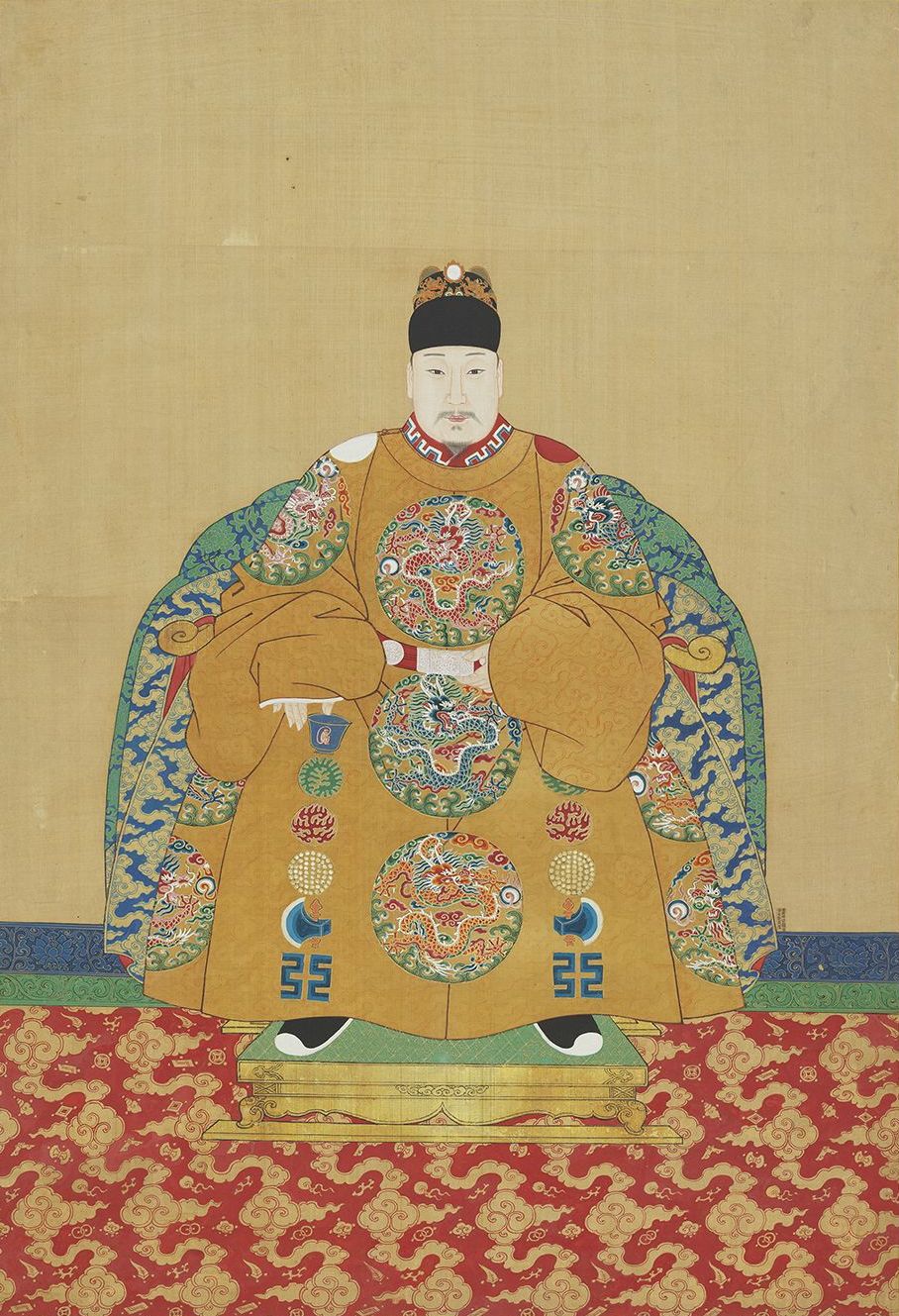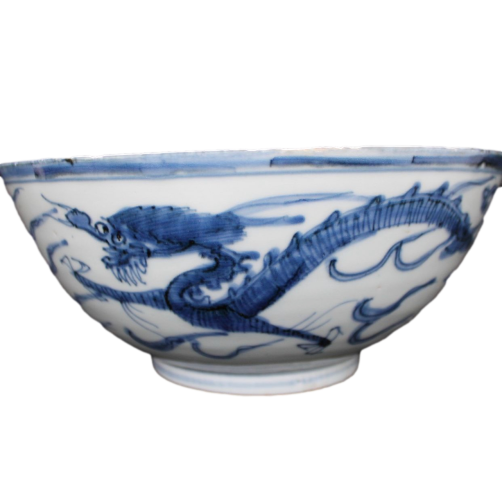Ming Chinese porcelain is a type of ceramic produced in China during the Ming dynasty (1368–1644). The Ming dynasty was the last imperial dynasty of China, and the production of porcelain during this period was highly influential in the development of Chinese culture.
Ming Chinese porcelain was made from a combination of kaolin, feldspar, and quartz. These ingredients were mixed together with water and then fired in a kiln, resulting in a hard, glassy material that was both beautiful and durable. Ming porcelain was typically glazed in blue and white, and decorated with intricate designs and motifs that reflected the culture of the time.
Ming porcelain was highly sought after by both Chinese and European markets. In particular, the blue and white designs were highly prized by European traders, who were in search of exotic goods from the East. This demand spurred a boom in porcelain production in China, and led to the development of new techniques such as the use of metal molds to create intricate patterns and designs.
Ming porcelain was also highly influential in the development of Chinese painting. Many of the artists of the time used the porcelain as a canvas, painting landscapes, figures, and other designs onto the surface. This led to the development of a distinctive style of Chinese painting that is still popular today.
Today, Ming porcelain is highly sought after by collectors and is considered an important part of Chinese history and culture. Pieces of Ming porcelain can be found in museums and art galleries around the world, providing a unique glimpse into the culture of an ancient time. Interested in your Ming dynasty porcelain value? Enquire here for a free antique valuation online.
Golden age of Ming porcelain production
The golden age of Ming porcelain production refers to the period from the early 15th to the early 17th century, during which time the Chinese porcelain industry reached new heights of technical and artistic excellence. This period, which coincides with the Ming dynasty (1368-1644), is often considered the golden age of Chinese ceramics, as it was during this time that many of the most iconic and highly prized types of Chinese porcelain were produced, including blue and white.

Yongle Emperor 永樂帝 (2 May 1360 –12 August 1424)
The Yongle Emperor was the third emperor of the Ming dynasty and during his reign, the production of porcelain flourished. The Yongle Emperor was a great patron of the arts, and his court was a center of creativity and innovation.
During the Yongle period, porcelain production reached a whole new level of sophistication. The production of porcelain was highly refined in terms of the raw materials used and the techniques employed. The porcelain was made using a combination of kaolin, feldspar, and quartz, which were mixed together with water and fired in a kiln.
The porcelain produced during the Yongle period was highly sought after by both Chinese and European markets. The pieces were often decorated with intricate designs and motifs that reflected the culture of the time. The pieces were often glazed in a variety of colors, including blue, white, green, and yellow, and were often adorned with gold and other precious metals.

Xuande Emperor 宣德帝 (16 March 1399 –31 January 1435)
The Xuande Emperor was the fifth emperor of the Ming dynasty and during his reign, porcelain production flourished. Porcelain production during the Xuande period was highly sophisticated and the pieces that were produced were both beautiful and durable.
During the Xuande period, porcelain makers developed new techniques that had a major impact on porcelain production. For example, they developed a technique called “doucai” which was a multi-colored glaze created by applying different colored glazes to the same piece of porcelain. This technique was highly sought after by both Chinese and European markets.
The porcelain produced during this period was often decorated with intricate designs and motifs that reflected the culture of the time. The pieces were often glazed in a variety of colors, including blue, white, green, and yellow, and were often adorned with gold and other precious metals.
The Xuande period was also a period of great innovation in porcelain production. Porcelain makers developed new techniques, such as the use of metal molds to create intricate patterns and designs.

Chenghua Emperor 成化帝 (9 December 1447 –9 September 1487)
The Chenghua period (1465-1487) of the Ming dynasty was a period of great innovation and creativity in porcelain production. Porcelain makers during this period developed new techniques that had a major impact on the industry.
One of the most notable innovations during this period was the development of the technique known as “ding” which was a form of overglaze decoration. This technique allowed for the production of multi-colored pieces, with intricate designs and classical Chinese symbolism.
One of the most iconic and highly valued porcelain to emerge from the period are the Chenghua chicken cups – exquisitely crafted piece of Chinese porcelain from the Ming Dynasty.
The cups are made of soft white porcelain and is glazed in a beautiful shade of blue. The cups are decorated with an intricate design featuring two roosters perched on branches and surrounded by floral motifs.
The very limited number of cups were created during the Chenghua period (1465-1487) and are considered a masterpiece of Chinese porcelain art. The cups are believed to have been created as a tribute to the Chenghua emperor and are a rare example of the porcelain-making techniques developed during this period.

Wanli Emperor 萬曆帝 (4 September 1563 –18 August 1620)
During the Wanli period of the Ming dynasty (1573-1619), porcelain production in China reached new heights of technical and artistic excellence. The Wanli reign was a time of prosperity and cultural exchange, and porcelain was highly prized both within China and abroad.
Porcelain production during this time was centered in the kilns of Jingdezhen, a city in the Jiangxi province of China that had long been known for its ceramic production. The raw materials for porcelain production, including kaolin clay and feldspar, were abundant in the surrounding area.
During the Wanli period, porcelain was decorated using a variety of techniques, including painting, carving, and gilding. The most famous porcelain produced during this time was known as "blue and white" porcelain, which featured intricate designs painted in cobalt blue on a white background. This type of porcelain was highly prized both within China and abroad, and it was often exported to Europe through the Silk Road.
In addition to blue and white porcelain, the Wanli period also saw the production of other types of porcelain, including "three-color" porcelain, which featured intricate designs in three colors, and "five-color" porcelain, which featured even more elaborate designs in a variety of colors.
Overall, the Wanli period was a golden age for porcelain production in China, and the porcelain produced during this time is still highly prized and collected today.
Exceptional examples
-

Large blue and white dragon jar - Christies
Boldly painted in underglaze blue with a powerful five-clawed dragon amidst scrolling clouds, with the neck being decorated with a band of clouds and the foot is surrounded by a petal border. Xuande four character mark into the base, and of the period (1426-1435)
-

Incredibly rare doucai chicken cup - Sotheby's
Decorated in doucai style with underglaze blue washes and outlines and overglaze green, red, yellow, and brown enamels. Only a handful of such wine cups survive to the present day. Chenghua markings and of the period (1147 - 1487)
-

Very rare eary Ming blue and white pear shaped bottle vase, Yuhuchunping - Christies
Richly painted blossoms of the lotus scrolls, complemented by the delicate leafy stems and perfectly matched by the brilliance of the cobalt blue used on this vase. Yongle mark and of the period (1403-1425).
Ming objects from the collection
Explore our Ming Chinese blue and white porcelain collection, gathered over many years and brought to you by Objets de Vertu.
Objects of Virtu
Blue and white dragon bowl, Ming dynasty, Wanli
Share





Explore more Ming objects
-
Antique Chinese porcelain bowl Bleu de Hue Vietnamese, marked base 19th century Qing
Regular price £2,500.00 GBPRegular priceUnit price per -
Chinese blue and white bowl with city wall design, Kangxi mark and likely of the period
Regular price £2,495.00 GBPRegular priceUnit price per -
Large Collection of Chinese Shipwreck Porcelain Cargo Wares, Ming Dynasty and Later
Regular price £3,600.00 GBPRegular priceUnit price per -
Collection of Chinese Blue and White Porcelain Ginger Jars, Qing Dynasty, 19th Century, 15.5CMS High; Six Other
Regular price £1,600.00 GBPRegular priceUnit price per

Our promise
We offer a hand curated collection of beautiful objects from porcelain to jades. Buy securly online, from experts in antique and modern oriental arts.










